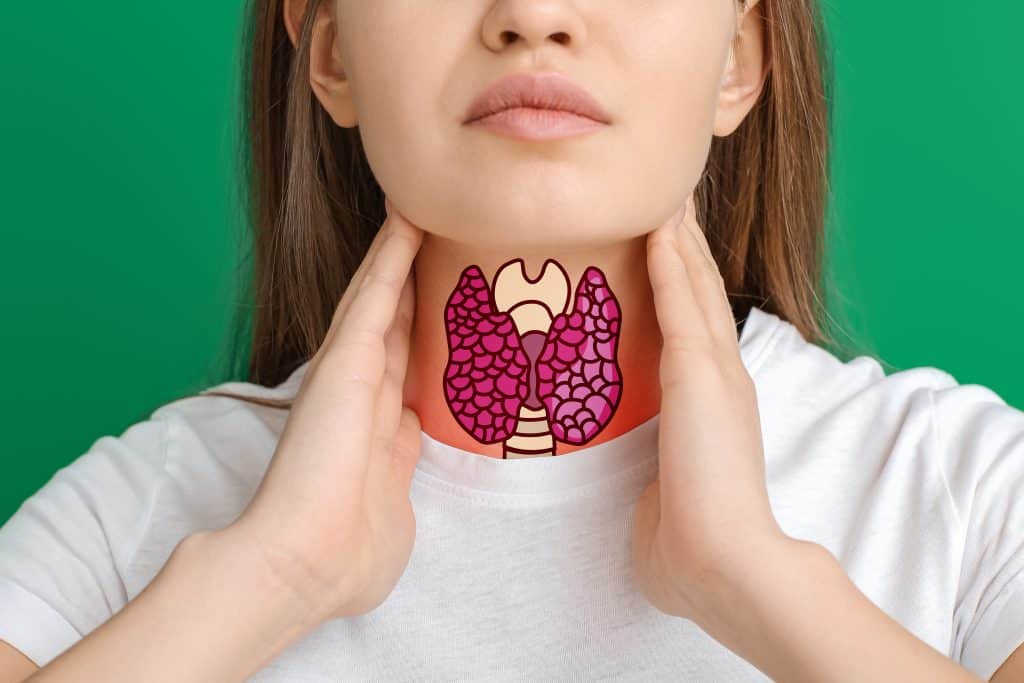What Causes Hormone Problems – And What You Can Do To Regain Endocrine Function
If you want to know what causes hormone problems, realize that a variety of factors, such as age, lifestyle, diet, and environmental exposures are all to blame. Age-related hormonal changes are common. For example, menopause in women and andropause in men often cause hormone imbalances. Poor lifestyle choices, such as smoking, inadequate exercise, or poor dietary habits, can also cause hormonal imbalances.
Additionally, environmental factors such as exposure to toxins, certain medications, and EMF radiation can disrupt hormone balance. Hormonal imbalance causes the endocrine glands to function improperly, leading to a wide range of problems such as infertility, weight gain, fatigue, and depression.
Medical conditions can also contribute to hormonal imbalances, such as thyroid disorders. Additionally, some women may experience changes in their hormones during pregnancy or menopause that can cause hormone problems.
Treating the underlying cause of hormonal imbalances is key to managing and resolving any associated symptoms.

What Causes Hormone Problems – Age-Related Hormonal Changes
As we age, our hormones often change.1 This can be due to a variety of different factors, such as reductions in the production of a variety of different hormones that the body produces, such as testosterone, estrogen, progesterone, and cortisol.2 When this happens, it can lead to a variety of symptoms. Some common symptoms that can occur include hot flashes and night sweats, weight gain, mood changes, reduced libido, sleep problems, depression, anxiety, difficulty concentrating, and memory problems.3
What Causes Hormone Problems – Poor Lifestyle Choices
Poor lifestyle choices can contribute to hormone problems. Too little sleep, excessive caffeine and alcohol consumption, tobacco use, and unhealthy eating habits can play a role in disrupting hormones and causing health issues.4 5 6 7
A sedentary lifestyle can cause hormonal imbalances. Regular physical activity helps to keep hormones balanced, but staying inactive for too long can contribute to problems like low testosterone, obesity, and chronic diseases such as heart disease.8
What Causes Hormone Problems – Stress
When not managed properly, stress can cause hormonal imbalances and health problems. Stress triggers the body to release hormones such as cortisol, which can create an imbalance in other hormones like testosterone or estrogen. Over time, this can lead to symptoms such as fatigue, difficulty concentrating, anxiety, depression, weight gain, sleeping troubles, and more.9

What Causes Hormone Problems – Medications
Hormone problems can be caused by a number of different medications. Birth control pills or other hormone-based contraceptives can disrupt the body’s natural balance of hormones, leading to depression and other symptoms.10
Aromatase inhibitors can block the production of estrogen, resulting in an imbalance of hormones that can cause a wide range of side effects. These side effects include hot flashes, joint pain, and insomnia.11
What Causes Hormone Problems – Exposure To Toxins
Exposure to certain environmental toxins causes hormone problems. Toxins such as persistent organic pollutants (POPs), heavy metals, and chemicals used in manufacturing or agricultural processes can all disrupt the endocrine system. POPs include dioxins, PCBs, DDT, and many other compounds that are used in industry or are released as by-products of combustion.12 13 Heavy metals such as cadmium, lead, and mercury can also cause problems for the endocrine system.14
Exposure to these toxins is often linked to conditions such as thyroid disorders, and infertility. Research indicates that exposure to environmental contaminants may have an effect on hormones in the body, leading to hormone imbalances. In addition, some environmental toxins can disrupt the development of the reproductive system in children, causing potential problems later on in life.15 16
Heavy metal accumulation also causes chronic inflammation, the root cause of hormone dysfunction and autoimmune conditions.17

What Causes Hormone Problems – EMF Radiation
Electromagnetic Field (EMF) radiation is becoming increasingly pervasive in our environment, with sources such as cell phone towers, smart meters, and WiFi networks. Studies have linked EMF radiation to a wide range of health concerns, including hormone problems.
Exposure to EMF radiation has been found to affect the body’s production of hormones. It has been shown to disrupt melatonin production, which is responsible for regulating sleep patterns and maintaining healthy circadian rhythms.18 Studies also suggest that EMF radiation can have an effect on the brain’s ability to produce serotonin, dopamine, and other mood-regulating hormones.19
In addition, EMF radiation has been linked to the disruption of thyroid hormones, which can cause mood swings and other symptoms.20 Studies have found that exposure to EMF radiation can also lead to an increase in cortisol levels, the hormone responsible for stress responses.21
EMF radiation manipulates calcium channels within the cellular membranes to remain open, allowing far more calcium to enter the cells, leading to chronic inflammation.22 23
To reduce your exposure to EMF radiation, consider turning off WiFi when it is not in use or installing a protective shielding device in your home.
Thyroid Hormone Problems
Thyroid hormone problems can have a range of symptoms and signs. Commonly, people with thyroid hormone problems experience fatigue or weakness, weight changes, dry skin or hair, feelings of anxiety or depression, constipation, and facial puffiness. Some people may also have trouble sleeping or difficulty concentrating.24
Toxins And Hormone Resistance
Hormone resistance results when our hormones are not able to work effectively due to the presence of toxins that cause systemic inflammation. This can affect many different areas including fertility, metabolism, energy levels, and overall health.
Endocrine-disrupting chemicals and toxic heavy metals are responsible for hormone resistance. Hormone resistance can be broken down into thyroid hormone resistance, and weight loss resistance.27 28 In the presence of these toxins, the cellular membrane becomes inflamed and therefore, hormones are unable to efficiently dock at hormone receptors.29 If hormones are unable to bind to their receptors, they are unable to communicate with the cells, leading to chaos throughout the endocrine system.
Identifying And Removing Toxins Is The Key To Counteracting Hormone Problems
Our bodies are constantly exposed to toxins from the environment, food, and everyday products. The chemicals and pollutants that we encounter on a daily basis can disrupt our hormones and lead to a variety of health problems. In order to counteract this, it is important to identify and remove as many toxins as possible from your life. This includes avoiding processed foods, reducing exposure to plastics and other chemicals, properly disposing of any hazardous materials, and eating organic foods whenever possible.
Heavy metals such as lead, arsenic, mercury, and cadmium can enter the body through food, water, or air and accumulate in various tissues. These metals pose a serious health risk and can interfere with normal hormonal function. Heavy metal toxicity has been linked to numerous hormone-related problems including infertility, endocrine disruption, and reproductive disorders.30
To address heavy metal toxicity, it is important to identify sources of exposure and take steps to minimize them. Eating organic food whenever possible and avoiding contaminated water supplies are key to reducing exposure.

Chelating Heavy Metals Out Of The Body
Chelation therapy is a powerful treatment for removing heavy metals from the body. It involves administering a true chelator like DMSA or DMPS, which are able to bind to and eliminate heavy metals from the body. Chelation has been used effectively in treating people with elevated levels of lead, mercury, arsenic, and other heavy metals.31
DMSA is an organic compound that has been used for many years as a chelating agent to help remove heavy metals from the body. It works by binding to heavy metals and other toxic substances, such as mercury and lead, and allowing them to be eliminated through the kidneys. DMSA can be taken orally or intravenously.32 However, it must be consumed regularly to remove heavy metals lodged in deep tissues.
When taking DMSA orally, it is important to consume it at regular intervals so heavy metals are properly excreted from the body instead of being reabsorbed. Consuming DMSA at its half-life, every 4 hours for 4 days straight, and then taking 10 days off is the typical cycle.33 Repeat this cycle as long as necessary, in most cases years, as it took years for toxic heavy metals to accumulate in the body.
Read more about removing heavy metals from the body.
What Causes Hormone Problems
Exactly what causes hormone problems can be varied, making it important to identify and address any potential triggers. Reducing toxic load, improving lifestyle, and reducing stress can all improve hormone-related issues.
Read more about thyroid hormone dysfunction here.
References
1 Leifke, E., Gorenoi, V., Wichers, C., Von Zur Mühlen , A., Von Büren , E., & Brabant, G. (2000). Age-related changes of serum sex hormones, insulin-like growth factor-1 and sex-hormone binding globulin levels in men: cross-sectional data from a healthy male cohort. Clinical endocrinology, 53(6), 689–695. https://doi.org/10.1046/j.1365-2265.2000.01159.x
2 Noth, R. H., & Mazzaferri, E. L. (1985). Age and the endocrine system. Clinics in geriatric medicine, 1(1), 223–250.
3 Hormones as You Age. (2023). Rush System. https://www.rush.edu/news/hormones-you-age
4 Rachdaoui N, Sarkar DK. Effects of alcohol on the endocrine system. Endocrinol Metab Clin North Am. 2013;42(3):593–615. doi:10.1016/j.ecl.2013.05.008
5 Steiner JL, Crowell KT, Lang CH. Impact of Alcohol on Glycemic Control and Insulin Action. Biomolecules. 2015;5(4):2223–2246. doi:10.3390/biom5042223
6 Marom-Haham, L., & Shulman, A. (2016). Cigarette smoking and hormones. Current opinion in obstetrics & gynecology, 28(4), 230–235. https://doi.org/10.1097/GCO.0000000000000283
7 Marks V. (1985). How our food affects our hormones. Clinical biochemistry, 18(3), 149–153. https://doi.org/10.1016/s0009-9120(85)80099-0
8 Marks V. (1985). How our food affects our hormones. Clinical biochemistry, 18(3), 149–153. https://doi.org/10.1016/s0009-9120(85)80099-0
9 Chronic stress puts your health at risk. (2021, July 8). Mayo Clinic. https://www.mayoclinic.org/healthy-lifestyle/stress-management/in-depth/stress/art-20046037
10 Skovlund, C. W., Mørch, L. S., Kessing, L. V., & Lidegaard, Ø. (2016). Association of Hormonal Contraception With Depression. JAMA psychiatry, 73(11), 1154–1162. https://doi.org/10.1001/jamapsychiatry.2016.2387
11 Ernst, A., Flynn, K. E., Weil, E. M., Crotty, B. H., Kamaraju, S., Fergestrom, N., & Neuner, J. (2021). Aromatase Inhibitor Symptom Management Practices: A Retrospective Study. Clinical breast cancer, 21(1), e38–e47. https://doi.org/10.1016/j.clbc.2020.07.008
12 Zhang, J., Jiang, Y., Zhou, J., Wu, B., Liang, Y., Peng, Z., Fang, D., Liu, B., Huang, H., He, C., Wang, C., & Lu, F. (2010). Elevated body burdens of PBDEs, dioxins, and PCBs on thyroid hormone homeostasis at an electronic waste recycling site in China. Environmental science & technology, 44(10), 3956–3962. https://doi.org/10.1021/es902883a
13 Alawi, M., Masaad, M., & Al-Hussaini, M. (2018). Comparative study of persistent organic pollutant (POP) (chlorinated pesticides, PCBs, and dioxins/furans) concentrations in cancer-affected human organs with those of healthy organs. Environmental monitoring and assessment, 190(8), 470. https://doi.org/10.1007/s10661-018-6856-3
14 Wang, X., Ding, N., Harlow, S. D., Randolph, J. F., Jr, Mukherjee, B., Gold, E. B., & Park, S. K. (2023). Exposure to heavy metals and hormone levels in midlife women: The Study of Women’s Health Across the Nation (SWAN). Environmental pollution (Barking, Essex : 1987), 317, 120740. https://doi.org/10.1016/j.envpol.2022.120740
15 Rami, Y., Ebrahimpour, K., Maghami, M. et al. The Association Between Heavy Metals Exposure and Sex Hormones: a Systematic Review on Current Evidence. Biol Trace Elem Res 200, 3491–3510 (2022). https://doi.org/10.1007/s12011-021-02947-0
16 Sun, X., Liu, W., Zhang, B., Shen, X., Hu, C., Chen, X., Jin, S., Jiang, Y., Liu, H., Cao, Z., Xia, W., Xu, S., & Li, Y. (2019). Maternal Heavy Metal Exposure, Thyroid Hormones, and Birth Outcomes: A Prospective Cohort Study. The Journal of clinical endocrinology and metabolism, 104(11), 5043–5052. https://doi.org/10.1210/jc.2018-02492
17 Cortés, S., Zúñiga-Venegas, L., Pancetti, F., Covarrubias, A., Ramírez-Santana, M., Adaros, H., & Muñoz, L. (2021). A Positive Relationship between Exposure to Heavy Metals and Development of Chronic Diseases: A Case Study from Chile. International journal of environmental research and public health, 18(4), 1419. https://doi.org/10.3390/ijerph18041419
18 Halgamuge M. N. (2013). Pineal melatonin level disruption in humans due to electromagnetic fields and ICNIRP limits. Radiation protection dosimetry, 154(4), 405–416. https://doi.org/10.1093/rpd/ncs255
19 Aboul Ezz, H. S., Khadrawy, Y. A., Ahmed, N. A., Radwan, N. M., & El Bakry, M. M. (2013). The effect of pulsed electromagnetic radiation from mobile phone on the levels of monoamine neurotransmitters in four different areas of rat brain. European review for medical and pharmacological sciences, 17(13), 1782–1788.
20 Koyu, A., Cesur, G., Ozguner, F., Akdogan, M., Mollaoglu, H., & Ozen, S. (2005). Effects of 900 MHz electromagnetic field on TSH and thyroid hormones in rats. Toxicology letters, 157(3), 257–262. https://doi.org/10.1016/j.toxlet.2005.03.006
21 Touitou, Y., Selmaoui, B., & Lambrozo, J. (2022). Assessment of cortisol secretory pattern in workers chronically exposed to ELF-EMF generated by high voltage transmission lines and substations. Environment international, 161, 107103. https://doi.org/10.1016/j.envint.2022.107103
22 Pall ML. Electromagnetic fields act via activation of voltage-gated calcium channels to produce beneficial or adverse effects. J Cell Mol Med. 2013 Aug;17(8):958-65. doi: 10.1111/jcmm.12088. Epub 2013 Jun 26. PMID: 23802593; PMCID: PMC3780531.
23 Pesce M, Patruno A, Speranza L, Reale M. Extremely low frequency electromagnetic field and wound healing: implication of cytokines as biological mediators. Eur Cytokine Netw. 2013 Mar;24(1):1-10. doi: 10.1684/ecn.2013.0332. PMID: 23674517.
24 Thyroid Disorders. (2022, October 28). Johns Hopkins Medicine. https://www.hopkinsmedicine.org/health/conditions-and-diseases/disorders-of-the-thyroid
25 Donath, M. Y., & Shoelson, S. E. (2011). Type 2 diabetes as an inflammatory disease. Nature reviews. Immunology, 11(2), 98–107. https://doi.org/10.1038/nri2925
26 Chiodini, I., Adda, G., Scillitani, A., Coletti, F., Morelli, V., Di Lembo, S., Epaminonda, P., Masserini, B., Beck-Peccoz, P., Orsi, E., Ambrosi, B., & Arosio, M. (2007). Cortisol secretion in patients with type 2 diabetes: relationship with chronic complications. Diabetes care, 30(1), 83–88. https://doi.org/10.2337/dc06-1267
27 Yilmaz, B., Terekeci, H., Sandal, S., & Kelestimur, F. (2020). Endocrine disrupting chemicals: exposure, effects on human health, mechanism of action, models for testing and strategies for prevention. Reviews in endocrine & metabolic disorders, 21(1), 127–147. https://doi.org/10.1007/s11154-019-09521-z
28 Rana S. V. (2014). Perspectives in endocrine toxicity of heavy metals–a review. Biological trace element research, 160(1), 1–14. https://doi.org/10.1007/s12011-014-0023-7
29 Foulkes E. C. (2000). Transport of toxic heavy metals across cell membranes. Proceedings of the Society for Experimental Biology and Medicine. Society for Experimental Biology and Medicine (New York, N.Y.), 223(3), 234–240. https://doi.org/10.1046/j.1525-1373.2000.22334.x
30 Balali-Mood, M., Naseri, K., Tahergorabi, Z., Khazdair, M. R., & Sadeghi, M. (2021). Toxic Mechanisms of Five Heavy Metals: Mercury, Lead, Chromium, Cadmium, and Arsenic. Frontiers in pharmacology, 12, 643972. https://doi.org/10.3389/fphar.2021.643972
31 Zalups RK, Bridges CC. Relationships between the renal handling of DMPS and DMSA and the renal handling of mercury. Chem Res Toxicol. 2012 Sep 17;25(9):1825-38. doi: 10.1021/tx3001847. Epub 2012 Jun 15. PMID: 22667351; PMCID: PMC4640686.
32 Adams JB, Baral M, Geis E, Mitchell J, Ingram J, Hensley A, Zappia I, Newmark S, Gehn E, Rubin RA, Mitchell K, Bradstreet J, El-Dahr J. Safety and efficacy of oral DMSA therapy for children with autism spectrum disorders: part B – behavioral results. BMC Clin Pharmacol. 2009 Oct 23;9:17. doi: 10.1186/1472-6904-9-17. PMID: 19852790; PMCID: PMC2770991.
33 Dart RC, Hurlbut KM, Maiorino RM, Mayersohn M, Aposhian HV, Hassen LV. Pharmacokinetics of meso-2,3-dimercaptosuccinic acid in patients with lead poisoning and in healthy adults. J Pediatr. 1994 Aug;125(2):309-16. doi: 10.1016/s0022-3476(94)70217-9. PMID: 8040783.




